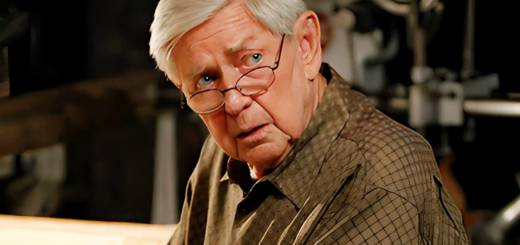The Twin Towers in the 1980s: Icons of New York’s Skyline.1107
In the heart of Lower Manhattan, rising like twin sentinels of glass and steel, the World Trade Center’s Twin Towers defined the New York City skyline. During the 1980s, when the city was undergoing cultural rebirth, economic struggles, and a burst of artistic expression, the Towers became more than just office buildings. They were symbols—of ambition, resilience, and the city’s ever-forward march.
The Rise of Modern Giants
By the time the 1980s began, the Twin Towers were already firmly established as landmarks. Completed in the early 1970s, they had quickly become some of the most recognizable structures in the world. Standing at 110 stories each, they were not just the tallest buildings in New York, but among the tallest ever built.
In the 1980s, photographs of Lower Manhattan almost always included the Towers, their reflective facades catching the light of the Hudson River by day and glowing like lanterns by night. For many, they were the physical embodiment of progress, monuments to human engineering and ambition.

A City in Transition
The 1980s were a turbulent decade for New York City. Crime rates were high, the economy was shifting, and the cultural fabric of the city was being rewoven daily. Yet through it all, the Twin Towers stood steady, a backdrop to the city’s struggles and triumphs.
They housed not only financial firms and global businesses but also a community of workers—tens of thousands of people who poured in and out of their revolving doors each day. Inside, office workers tapped on typewriters, took calls, and carried briefcases, while on the plaza outside, lunchtime crowds gathered at food carts, and children splashed in the fountain under the watchful gaze of the soaring skyscrapers.
A Stage for Culture and Art
The World Trade Center was not just a workplace; it was a cultural hub. The Austin J. Tobin Plaza at the base of the Towers often hosted concerts, public art, and community events. In the summer, the plaza became a gathering place, filled with music, food, and life.
One of the most memorable art installations of the era was Fritz Koenig’s sculpture The Sphere, which stood between the Towers. In the 1980s, it was simply a piece of modern art; in later years, it would become a poignant symbol of resilience.
The Towers also found themselves immortalized in film, television, and photography. From establishing shots in movies to album covers and postcards, their presence became shorthand for New York City itself. For those who lived through the decade, the Towers were as much a part of daily life as the subway or yellow cabs.
A View From Above
Perhaps the most memorable experience of the Towers in the 1980s came from the top. The South Tower’s observation deck and the Windows on the World restaurant in the North Tower offered views unlike any other.
Visitors from around the globe would press their faces to the glass, awestruck by the sprawl of Manhattan below—the snaking rivers, the Statue of Liberty in the distance, the grid of streets stretching endlessly uptown. For New Yorkers, it was a reminder of the city’s vastness; for tourists, it was a dream fulfilled.
Windows on the World was more than a restaurant; it was an experience. Dining there in the 1980s meant celebrating life high above the bustle of the city, a memory that many still cherish decades later.
Everyday Life Beneath Giants
For those who worked in the Towers, the 1980s were filled with the ordinary rhythms of office life. Mornings began with a rush through the subways into the PATH station beneath the complex. Workers rode elevators that climbed at dizzying speeds, sometimes stopping multiple times before reaching their destination on the 80th, 90th, or even 100th floor.
Cafeterias bustled during lunch breaks, and conversations spilled over coffee cups and desk partitions. From inside, the Towers were not abstract icons but real, lived-in spaces where people pursued careers, friendships, and dreams.
A Symbol Beyond New York
During the 1980s, the Twin Towers became global symbols of commerce and ambition. They were often featured in magazines and documentaries as evidence of America’s economic might and engineering genius. Tourists carried home souvenirs bearing their likeness, while postcards showed them gleaming at sunset or shrouded in morning fog.
The Towers even inspired daring feats. In 1974, Philippe Petit had already walked a high wire strung between them, but in the 1980s the Towers continued to attract adventurers and dreamers who saw them not just as buildings but as canvases for imagination.
Memory and Meaning
Looking back, the image of the Twin Towers in the 1980s carries a special poignancy. It was a time before tragedy, when the Towers seemed eternal—immovable pillars that would always define the skyline. For those who lived in New York then, the Towers were constants, standing guard over a city that never slept.
Their eventual destruction in 2001 cast their memory in a new light. Photographs from the 1980s, once just nostalgic glimpses of a bygone era, now carry the weight of remembrance. They remind us of what was lost, but also of the spirit of New York during that decade: bold, brash, creative, and unyielding.
Conclusion
The Twin Towers of the 1980s were more than architecture—they were symbols of aspiration, backdrops to millions of lives, and silent witnesses to a city in flux. They stood tall over a decade of change, embodying both the grit and the glory of New York City.
When we look at images of them today, standing proud in the 1980s skyline, we see not only steel and glass but the heartbeat of an era. They remain, even in memory, a reminder of what humanity can build, what a city can endure, and what it means to stand tall in the face of time.


